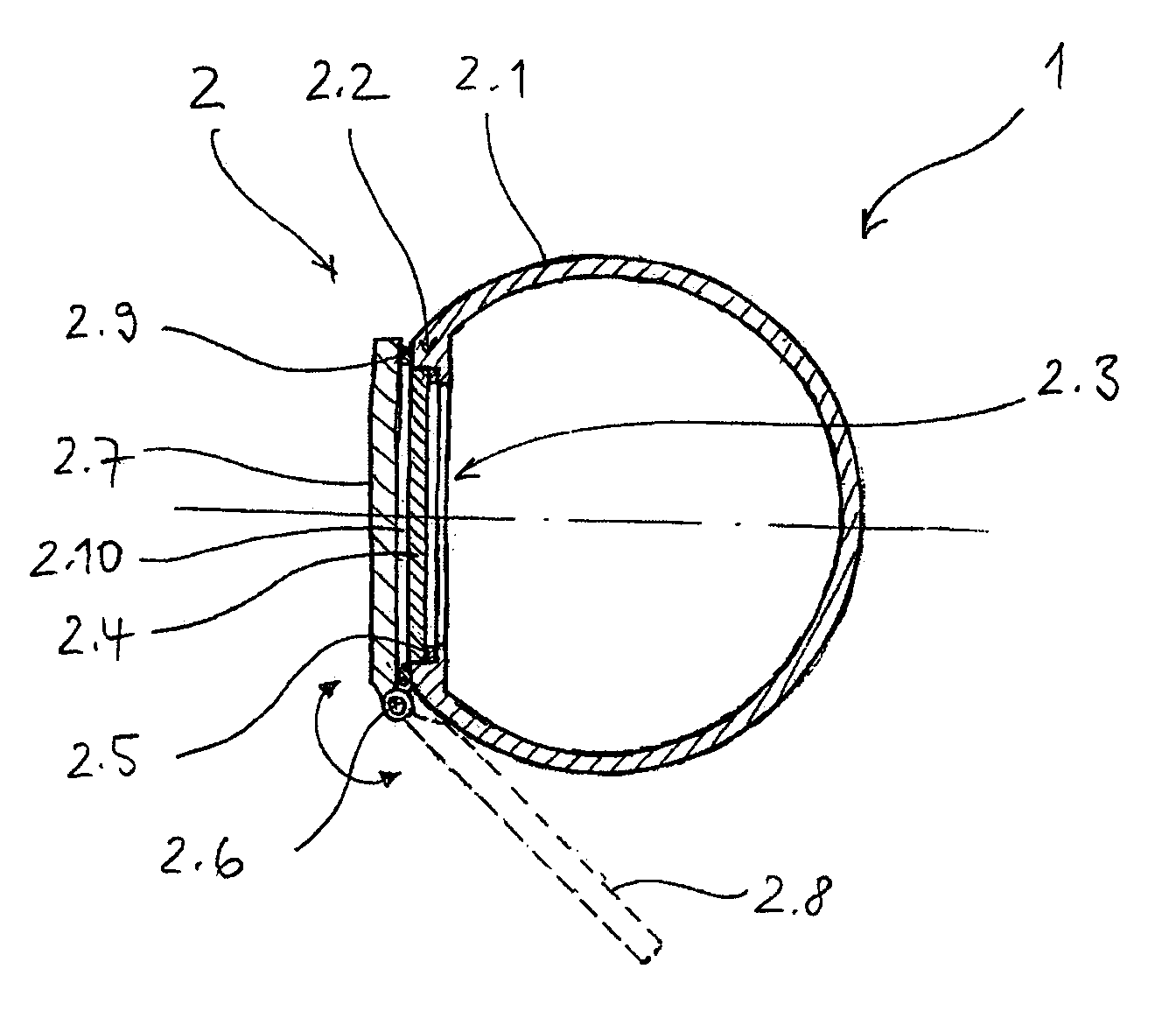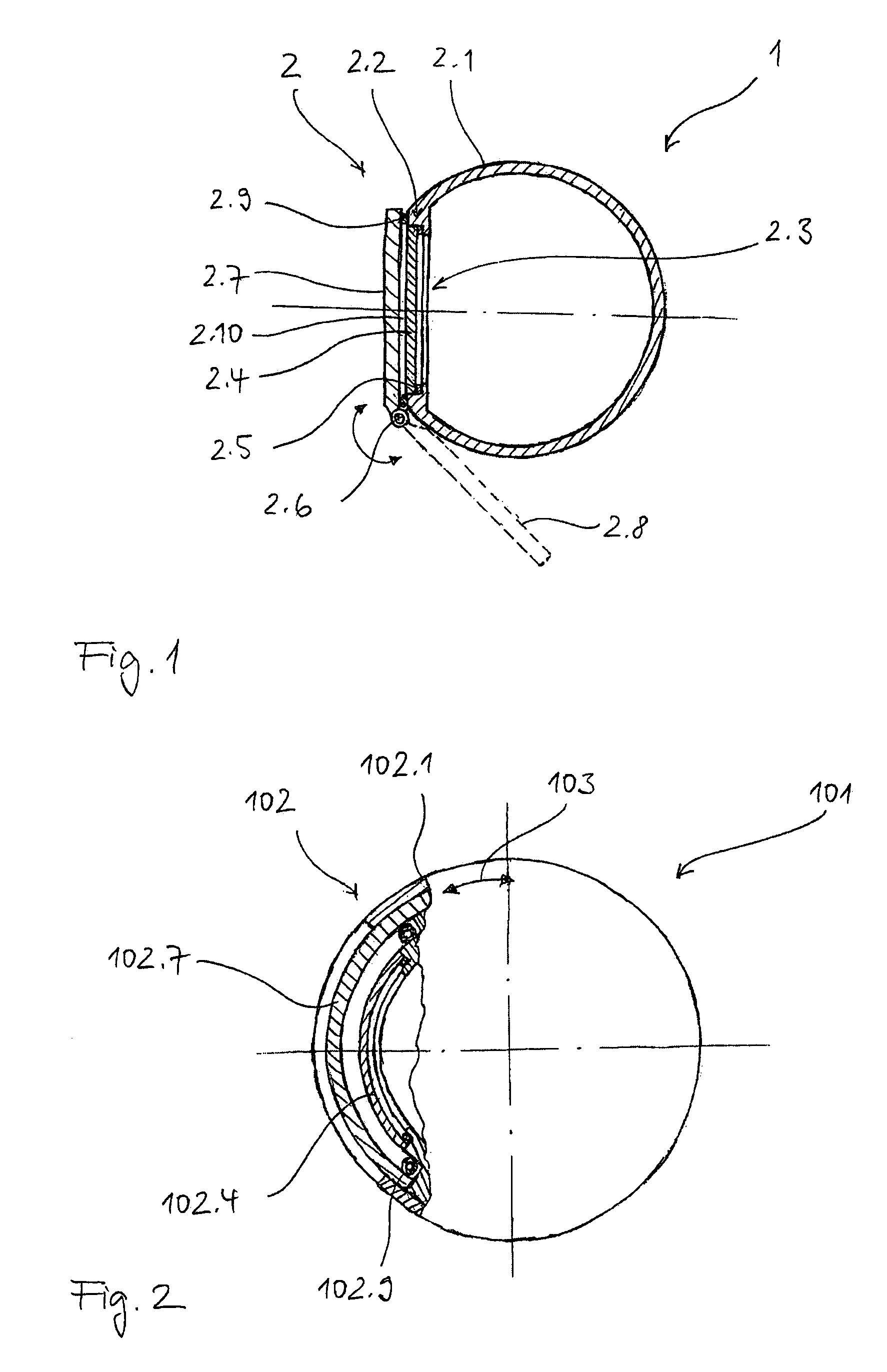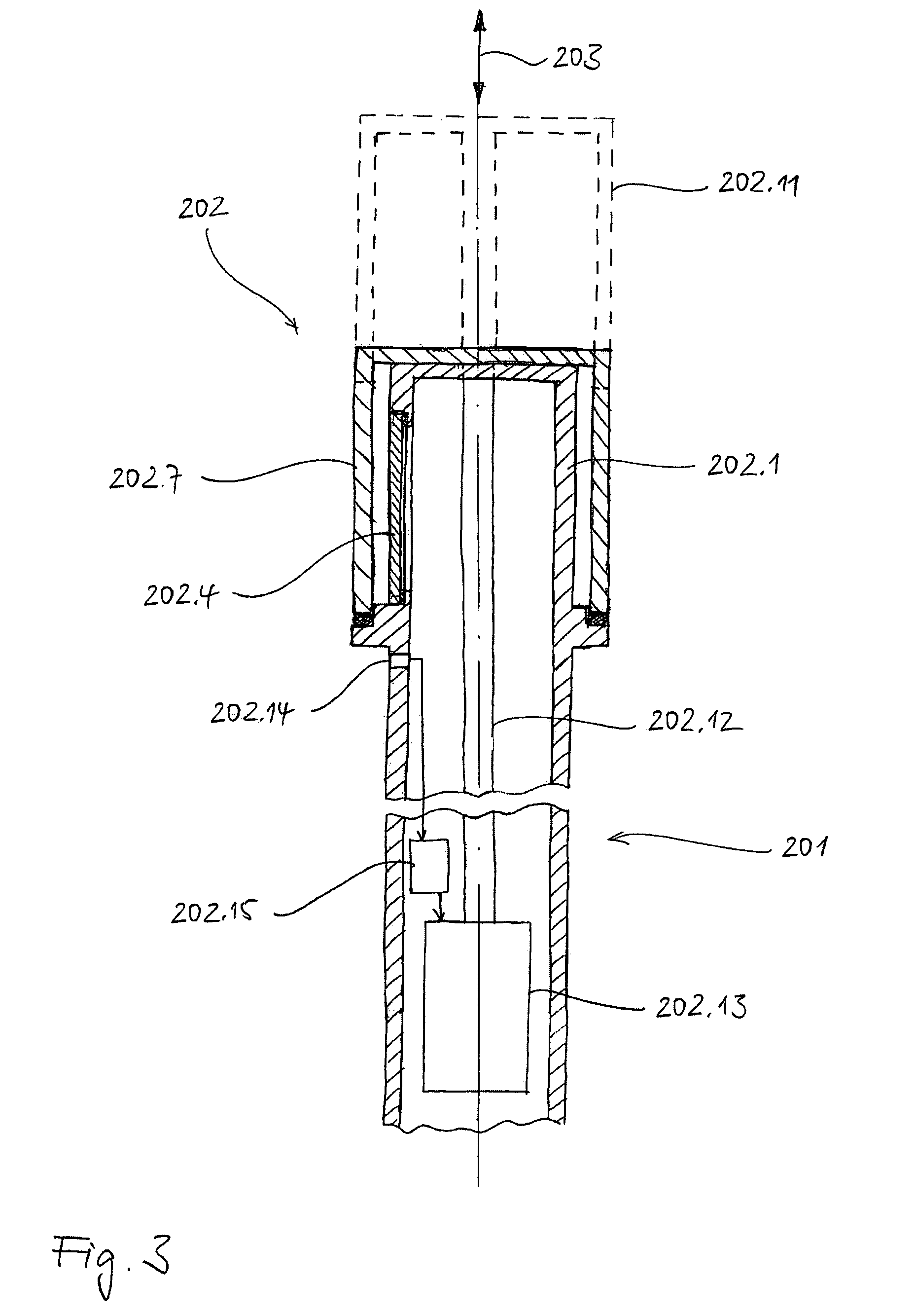Optical device for use under significantly varying ambient pressure
an optical device and ambient pressure technology, applied in special purpose vessels, waterborne vessels, underwater equipment, etc., can solve the problems of comparatively high cost of sealing, comparatively thick and consequently costly panes, heavy and large arrangement, etc., and achieve good and long-term reliable imaging properties.
- Summary
- Abstract
- Description
- Claims
- Application Information
AI Technical Summary
Benefits of technology
Problems solved by technology
Method used
Image
Examples
first embodiment
[0030]In the following, a first preferred embodiment of an optical device according to the invention will be described with reference to FIG. 1. FIG. 1 shows a schematic section through a periscope 1 of a submarine with a first preferred embodiment of the optical device 2 according to the invention arranged on the free end of the periscope 1.
[0031]The optical device 1 comprises a housing 2.1 with a first region 2.2 that contains a window-like recess 2.3. A transparent element in the form of a transparent pane 2.4 is inserted into this recess 2.3. Light can be incident into the interior of the housing 2.1 through the pane 2.4.
[0032]In the interior of the housing, the remainder of the optical system of the periscope 1—not illustrated in FIG. 1—is situated adjacent to the pane 2.4. This optical system needs to be protected from the admission of moisture.
[0033]A first sealing gap between the pane 2.4 and the housing 2.1 is sealed by means of a first sealing device in the form of a first...
second embodiment
[0039]In the following, a second preferred embodiment of an optical device according to the invention will be described with reference to FIG. 2. FIG. 2 shows a schematic section through another preferred embodiment of a periscope 101 for a submarine, wherein another preferred embodiment of the optical device 102 according to the invention is arranged on the free end of the periscope 101. Since the basic function and design of this embodiment correspond to those of the embodiment shown in FIG. 1, only the respective differences between the two embodiments are discussed.
[0040]A first difference can be seen in the fact that the protection apparatus is realized in the form of a displaceable bulkhead 102.7 that is supported in the housing 102.1 and may be displaced in the direction of the double arrow 103, namely between the first functional position shown in which it covers the pane 102.4 and the second functional position—not shown—in which it leaves the pane 102.4 uncovered.
[0041]Ano...
third embodiment
[0042]In the following, a third preferred embodiment of an optical device according to the invention will be described with reference to FIG. 3. FIG. 3 shows a schematic section through an optronics mast 201 for a submarine, wherein another preferred embodiment of the optical device 202 according to the invention is arranged on the free end of the optronics mast 201. Since the basic function and design of this embodiment also correspond to those of the embodiment shown in FIG. 1, only the respective differences between the two embodiments are discussed.
[0043]A first difference can be seen in the fact that the protection apparatus comprises a tubular casing in the form of a tubular cap 202.7 that surrounds the tubular housing 202.1 in the first functional position. The cap may be displaced in the direction of the double arrow 203, namely between the first functional position shown in which it covers the pane 202.4 and the second functional position that is indicated with broken lines...
PUM
 Login to View More
Login to View More Abstract
Description
Claims
Application Information
 Login to View More
Login to View More - R&D
- Intellectual Property
- Life Sciences
- Materials
- Tech Scout
- Unparalleled Data Quality
- Higher Quality Content
- 60% Fewer Hallucinations
Browse by: Latest US Patents, China's latest patents, Technical Efficacy Thesaurus, Application Domain, Technology Topic, Popular Technical Reports.
© 2025 PatSnap. All rights reserved.Legal|Privacy policy|Modern Slavery Act Transparency Statement|Sitemap|About US| Contact US: help@patsnap.com



